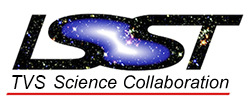Fast Transients
Members
Members that collaborated to generate this roadmap:
Eric Bellm (Caltech)
Primary subgroup contact:
Maria Drout (Carnegie Observatories - mdrout@carnegiescience.edu)
Subgroup MAF engineer:
Eric Bellm (Caltech - ebellm@caltech.edu)
Subgroup Primary members
- Eric Bellm - Caltech
- Maria Drout - Carnegie Observatories
- Shri Kulkarni - Caltech
- Peter Kurczynski - Rutgers University
- Marc Moniez - Linear Accelerator Laboratory
- Dave Morris - UK
- Arne Rau - Max Planck Institute for Extraterrestrial Physics
- Wayne Rosing - LCOGT
- Ken Shen - UC Berkeley
- Chris Smith - NOAO/CTIO
- Lluis Galbany - Universidad del Chile
Subgroup Secondary members
- Brad Cenko - NASA/GSFC
- Stefano Valenti - UC Davis
- Andrew Becker
- Adam Miller
- Hakeem Oluseyi
- Umaa Rebbapragada
- Stephen Ridgway
- Rob Seaman
- Tom Vestrand
- Przemek Wozniak
- Todd Boroson
- Lluis Galbany
- Zoheyr Doctor
- Mansi Kasliwal
- Samaya Nissanke
- Leo Singer
- Cid Mennickent
- Robert Williams
- Stefano Di
- Brenda Frye
- Edo Berger
- Derek Fox
- Howard Bond
- Arne Henden
- Federica Bianco
- Ryan Chornock
- Lucy Frey
- Chris Fryer
- Tom Matheson
- David Reiss
- Stephen Smartt
- Ken Smith
- Mark Sullivan
- Poshak Gandhi
- Armin Rest
Roadmap Outline
(Overlaps significantly with [[Multiwavelength_Characterization/Counterparts]])
Science Drivers
Discovery & rapid followup of young SNe
- radius/binarity constraints from photometry
- Shock breakout/shock cooling
- Flash spectroscopy
Discovery & rapid followup of GRB afterglows
- Orphan afterglow discovery: beaming constraints, jet structure
- Discovery of “dirty fireballs”: on-axis events with no high-energy emission
Stellar flares
- Flare rates; amplitude distribution
Rare & unknown
- Discovery
Goals & Activities
Near term (2016)
- Gather multi-band templates for representative objects
- Develop simplest MAF metrics to determine cadences even capable of recording fast variability
- Develop more sophisticated MAF simulation infrastructure: Monte Carlo realizations of cosmological populations → realized lightcurves → higher-level metrics
Intermediate term (2017-2020)
- Develop algorithms for rapid identification of fast transient candidates
- Test various OpSIM cadences (rolling cadence, etc.) for ability to identify fast transients
- Prototype broker interfaces using precursor surveys
- Advocate for followup observing instruments and observing modes optimized for faint transient followup
LSST Commissioning Period
LSST +1 year
- Test broker interfaces. (Too much asteroid/faint variable contamination for fast transient searches.)
LSST +3 years
- Fast transient searches going in earnest!
LSST +10 years
- Archival rates analysis
